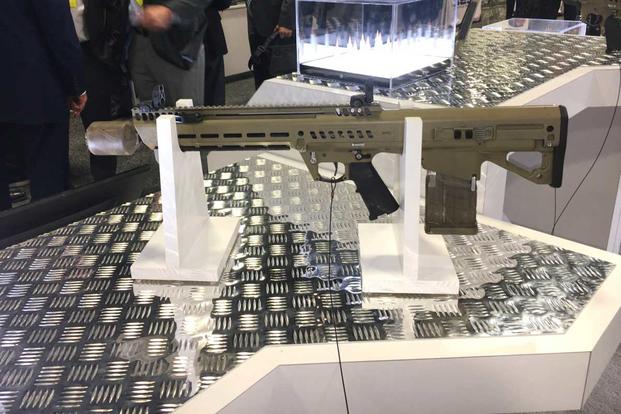The U.S. Army general in charge of modernization says he is squeezing program schedules to make sure key soldier modernization efforts delayed by the novel coronavirus stay on track.
The COVID-19 pandemic has forced Army program officials to rely heavily on virtual meetings to move the service's ambitious modernization effort forward, but the virus has begun to slow delivery times and affect testing schedules, Gen. John "Mike" Murray, head of Army Futures Command, told defense reporters Thursday.
Strict precautions to slow the spread of the virus have affected supply chains and delayed the delivery of Next Generation Squad Weapon (NGSW) prototypes by six weeks, he said.
Related: Army Reveals Timeline for Fielding New Infantry Weapons
"We will get weapons into the hands of soldiers ... two weeks after we take delivery of the prototypes. That used to be a longer process, so we will get back four of those six weeks," Murray said. "There is slack built into the schedule for unforeseen circumstances."
The Army selected General Dynamics Ordnance and Tactical Systems Inc., Textron Systems and Sig Sauer Inc. for the final phase of the NGSW effort to equip close-combat units with automatic rifle and rifle variants of the 6.8mm system. The service plans to select a final design for both weapons from a single company in the first quarter of 2022 and begin fielding them to an infantry brigade combat team in the first quarter of 2023.
"It's not like we are cutting anything out. We are just moving faster than we had originally planned to go from prototype delivery into the hands of soldiers," Murray said. "Every individual program, there are places we are massaging and working to make back time."
The Army has also had to delay the third soldier touch point (STP) evaluation of the Integrated Visual Augmentation System (IVAS), originally scheduled for this summer, to the fall, he said.
IVAS is a key soldier lethality effort, based on Microsoft's HoloLens technology, that Army senior leaders hope will give close-combat forces greater tactical effectiveness than ever before. Slated for fielding in fiscal 2021, IVAS is being designed to equip soldiers with a heads-up display that allows them to view tactical maps, as well as their weapon-sight reticle.
STP three will be the first time that soldiers test the latest version of IVAS in a "military form factor" designed for rugged use on the battlefield, Murray said.
"Right now, we are going to delay soldier touch point three because it is such a critical touch point because it's the first military form factor to this fall," he said. "We have got plans in place to make that time up and make first unit equipped like we promised all along."
Meanwhile, soldiers at Fort Riley, Kansas, are in the middle of an STP to evaluate future unmanned aerial systems (UAS) in an effort to replace the RQ-7 Shadow UAS, Murray said.
The effort involves five different vendor prototypes and five different brigades across the country, he said.
Soldiers at Riley are using "the proper [personal protective equipment] with the proper social distancing" along with proper hygiene guidelines to conduct the SPT evaluation.
"It varies on where you are in the country, so at one installation, at Fort Campbell, [Kentucky], we are a little bit delayed on that soldier touch point; we should be able to get that off the ground here this month," Murray said, adding that he is confident the Army will be able to field all of its modernization programs on schedule.
"There may be some slips in some key decisions. There may be slips in some soldier touch points -- what I am focused on, what I believe is the most important thing, is when we promised our soldiers we would deliver that capability," he said. "The current estimate is we will deliver the capability by the time we said we would deliver the capability to our soldiers."
-- Matthew Cox can be reached at matthew.cox@military.com.
Read More: Army's Future Tactical Glasses Will Help Soldiers Tell Friend from Foe












